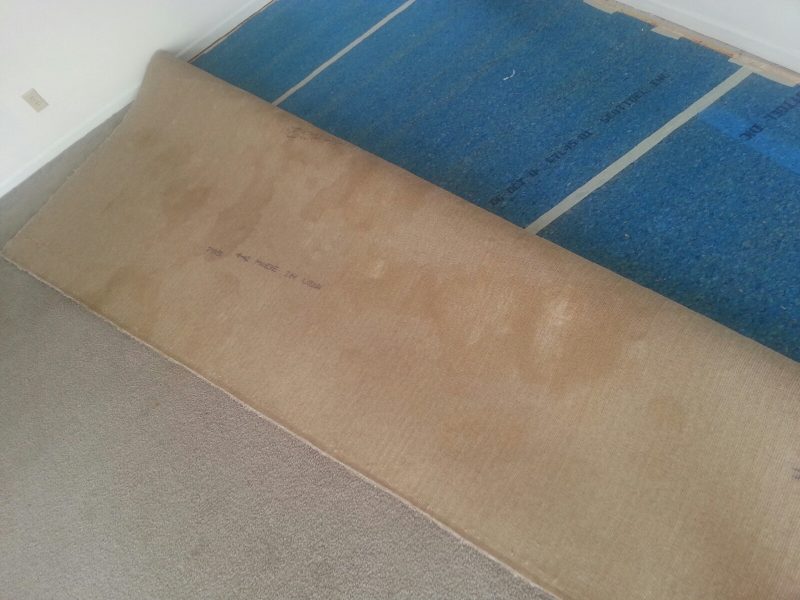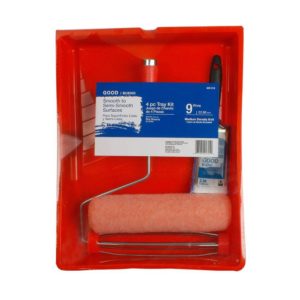
I’ve got good news, and I’ve got bad news.
As I’m sure you know, cats are scientifically proven to be massive jerks. Sure, they’re cute and stuff. But when they decide to start peeing on your living room carpet, you just want to wring their little necks.
After all, cat urine is the most heinous substance known to man–and let’s not split hairs about the difference between cat urine and cat “spray”. If it’s liquid and it comes from a cat’s rear end, it’s gonna be stinky.
So here’s the good news: If you’ve got a cat urine problem in your carpet, you can fix it. But I’ve got bad news, too: The “fix” probably isn’t what you had in mind. In fact, you’ll probably hate it.
However, if you follow my advice, I guarantee it will work.
The Real Problems
If there were ever a perfect storm for foul odors, it’s cat urine.
Cats have unique kidneys, which create super-concentrated urine with lots of urea. Urea converts to ammonia, as I’m sure you’ve noticed if you’ve ever spent time near a litter box. It’s not a particularly pleasant odor.
Furthering the problem, since urine is biological, it feeds bacteria. As bacteria digest urine, they release their own waste which also stinks.
So just think about that… You’ve got stinky, ammonia-like urine being eaten by stinky bacteria that emit stinky waste. Triple stink!
As if that weren’t enough, cat urine sinks deep into your carpet, often penetrating the backing and underlying pad. If there’s enough urine, it even seeps into the subfloor.
Then, even if you have the carpet cleaned, there’s still pee trapped underneath in the pad and subfloor.
Like I said… perfect storm.
Let’s Get Logical
Think about this logically… The best way to get rid of odor is to get rid of the source. For example, if a rotten head of lettuce stinks up your fridge, all you have to do is throw away the lettuce, correct?
Cat urine is no different. If we can get rid of the source–in this case, excess cat urine in the carpet, pad and subfloor–then we can, in turn, get rid of the odor.
But that’s easier said than done. Even professional carpet cleaners struggle with cat odors because they can only clean the surface of the carpet. They can’t get to the pad and subfloor.
Since professionals struggle, then you can probably understand why the average do-it-yourselfer has virtually no chance at removing cat odors.
I’m not trying to discourage you. Rather, I’m trying to demonstrate how big of a problem cat pee really is. It’s the only way I can convince you that drastic measures are needed.
What are those drastic measures? Just like throwing out that rotten head of lettuce, we need to remove the source of your cat pee odor. That means replacing contaminated pad, sealing the subfloor, and probably even replacing the contaminated carpet.
Here’s How To Do It
First, you need to understand two things…
Thing Number One: Even if you treat the carpet, replace the pad and seal the subfloor, there’s a good chance you’ll still notice odors from the carpet. Why?
Because cat urine is nearly impossible to remove from carpet. Believe me, I’ve tried everything over the years. In fact, when my wife and I discovered our naughty cat, Twinkie, was peeing in the living room, I used it as a chance to experiment on my own carpet.
After two months of trying different things, I finally gave up, cut out the contaminated carpet and pad, sealed the subfloor with Kilz and then installed new carpet and pad. Luckily, we had a large carpet remnant. Instead of replacing the entire room, I was able to replace only the contaminated area, which was about a 3-ft x 3-ft section in one corner.
Before I gave in and replaced the carpet, I tried every product, tip, trick and technique you can imagine… but NOTHING worked. We could still smell the pee until I literally removed the source of the odor. Which brings me to the next point…
Thing Number Two: I realize there’s no shortage of home remedies and over-the-counter products that claim to remove cat odors. I also realize many professionals claim to be able to remove cat odors through various means.
But I’m here to tell you, none of it works. Save your time and money. Trust me. No seriously… TRUST ME.
I know you’re hoping for an easy fix or to stumble upon some miracle product, but it ain’t happenin’. Sorry to be blunt, but that’s the truth.
Fortunately, you still have options. Remember those drastic measures I mentioned earlier? Here they are…
The Exact Steps
Move all the furniture away from the area you suspect contains pee.
Locate the nearest corner and pull the carpet back from the walls. Either grab the carpet with a pair of pliers or stab a screwdriver through it and just yank it back. Don’t worry, it won’t hurt anything… probably.
Examine the back of the carpet. You’ll see every pee spot that’s ever happened. While the surface of your carpet can hide stains, the backing doesn’t lie. It might look something like this:

By looking at the backing, you’ll be able to extrapolate what areas of the pad have been affected. At this point, you’ll have two choices, which both require removing the pad and sealing the subfloor. But you can opt to either…
- Attempt to treat the existing carpet, or
- Cut out the contaminated carpet and replace it with a piece from a remnant or closet.
I STRONGLY suggest option B, replacing the contaminated carpet.
If you insist on trying to save the carpet, I recommend hiring a professional to clean it because they have chemicals and equipment specifically designed to attack pet urine. If that’s not an option, you’ll have to do it yourself. Here’s how…
Start by removing the affected pad, then thoroughly sweep the subfloor. If the subfloor is wood or plywood, cover it in a plastic tarp after sweeping because we’re about to flood the carpet with soapy water. A tarp will keep the water from seeping into areas that should stay dry. If your subfloor is concrete, you probably don’t need a tarp, but use common sense.
Next, turn the carpet right-side up and saturate it with soapy water. What kind of soapy water? Fill a five-gallon bucket with warm water (don’t make it piping hot because it might damage the carpet backing which is held together with latex glue) and add several shots of Dawn dish soap.
How much dish soap? Pretend you’re mixing a bucket of soapy water to wash your car. That’ll do just as well for washing carpet.
Now pour the water over the carpet and spread it around so the contaminated area gets even coverage. If you’re treating a large area, you may need more than one bucket. Let the soapy water dwell for about five minutes and then extract it with a Shop-Vac. Do NOT attempt to do this without a Shop-Vac! You MUST extract all that water. It will be full of diluted urine, so you need to remove as much as possible.
After you’ve thoroughly extracted the carpet, let it dry COMPLETELY. Then pull it back to expose the subfloor once again. You may need to sweep the subfloor one more time, and then seal it with Kilz.
I recommend those cheap, disposable paint roller kits they sell at Lowe’s and Home Depot. Personally, I hate cleaning paint rollers and brushes, especially when using Kilz. With a kit, you can quickly seal the subfloor and then throw away the painting tools.
This kit from Home Depot costs less than eight bucks:

Simply roll on the Kilz and then toss the kit. Just don’t assume you can skip this step. Cat urine easily penetrates wood and concrete, so the subfloor MUST be sealed.
Once the Kilz has dried, install new pad. You can often find sections of carpet padding at Lowe’s or Home Depot without having to buy a whole roll.
Finally, re-install the carpet, for which you might have to watch some YouTube videos. It’s difficult to explain carpet installation, but watching someone do it on YouTube should be easy to understand.
Again, this probably won’t work completely, but it’s your best shot if you intend to keep the existing carpet. Give it a few days to air out before you judge the final result. It may not be perfect, but hopefully there will be marked improvement.
Ideally, you’ll be able to replace the affected carpet. In that case, you don’t need to worry about the soapy water or Shop-Vac. However, you still need to replace the pad and seal the subfloor. Of course, you’ll need a donor piece of carpet to replace the contaminated section you cut out.
The donor piece can come from a remnant, closet or other inconspicuous area. Just make sure it’s big enough to completely replace the contaminated section.
But how do you insert the new piece? If possible, call a professional installer and let him do it. Large patches can be tricky.
If that’s not an option, you’ll have to figure out how to do it yourself. I recently wrote this article about doing small carpet patches. If you learn the concepts, you can scale them up and complete a larger patch.
Questions? Confused? Enraged at your cat? Feel free to call or text me, Ross, at 317-370-9075. I’m always happy to help.
As always, if you live in or around Indy and you’d rather not mess with this yourself, I can take care of it for you. Give me a buzz and I’ll get you fixed up.








